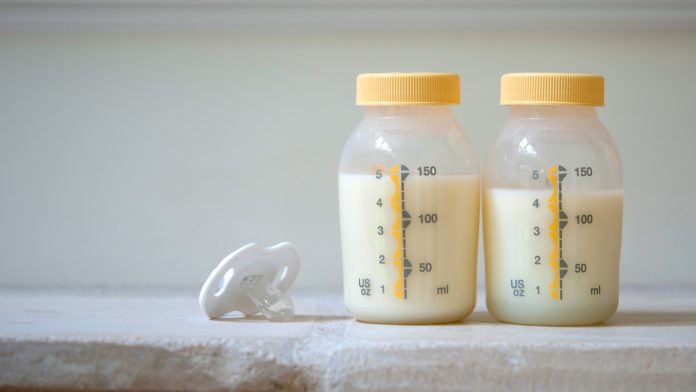
A new study focused on changes that take place during lactation by investigating cells found in human breast milk and how this could aid breast cancer research.
Breast tissue is dynamic, changing over time during puberty, pregnancy, breastfeeding, and ageing. The researchers found that the cells in breast milk, once believed to be dead or dying, are alive. These living cells provide researchers with the chance to study not only the changes that occur in mammary tissues during lactation but also insight into a potential early indicator of future breast cancer development.
The study was led by researchers from the Wellcome-MRC Cambridge Stem Cell Institute (CSCI) and the Department of Pharmacology at the University of Cambridge.
Studying breast milk
Human breast milk is a liquid source of food made by the human body to nourish babies. Breastfeeding has a selection of benefits, including protection for your baby from infections, is readily available, and builds a strong emotional bond between you and your baby.
“I believe that by studying human milk cells, we will be able to answer some of the most fundamental questions around mammary gland function such as: How is milk produced? Why do some women struggle to make milk? And what strategies can be employed to improve breastfeeding outcomes for women?,” said Dr Alecia-Jane Twigger at the Wellcome-MRC Cambridge Stem Cell Institute who led the study.
The researchers collected voluntary breast milk samples from lactating women, alongside samples of non-lactating breast tissue donated from women who elected to have aesthetic breast reduction surgery. Using single-cell RNA sequencing analysis, the team conducted a novel comparison of the composition of the mammary cells taken using these two methods, identifying the distinctions between lactating and non-lactating human mammary glands.
Accessing breast tissue
Whilst accessing breast tissue for the study relies on donors already undergoing surgery, breast milk samples were much simpler to acquire. Breast milk donors were engaged with through midwives or women’s networks (a challenge due to the Covid-19 pandemic) and agreed to share their samples over time. Typical production for lactating women is between 750-800ml, and the sample size for Twigger’s research is on average 50ml, an amount which can contain thousands of cells to study.
By collecting these breast milk samples donated by breastfeeding women – samples are now known to contain living and viable cells – researchers can capture dynamic cells in a non-invasive way. This greater ease of access to breast cells can open the door to more studies on women’s health in the future.
“The first time Alecia told me that she found live cells in milk, I was surprised and excited about the possibilities. We hope this finding will enable future studies into the early steps of breast cancer,” said Dr Walid Khaled, from the Wellcome-MRC Cambridge Stem Cell Institute and University of Cambridge’s Department of Pharmacology, who was also involved in the study.






















